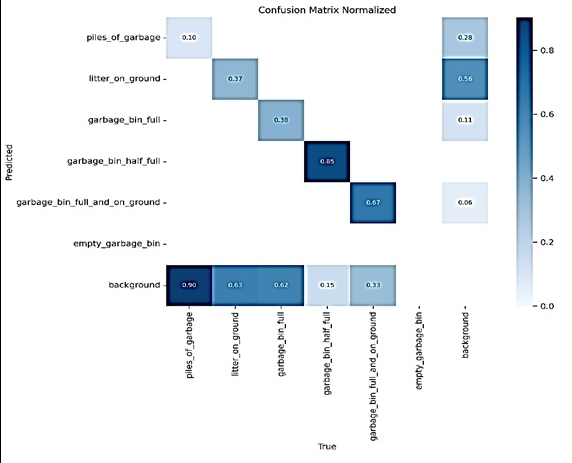An enhanced control solutions for efficient urban waste management using deep learning algorithms
Keywords:
Waste management, Deep learning algorithms, IoT, Support vector machineAbstract
This study focuses on developing an efficient urban waste management system using deep learning algorithms and Internet of Things (IoT) technology. The goal is to improve waste management in Ikot Ekpene municipality by enabling quick disposal responses to prevent environmental pollution. The researchers employed an Object-Oriented Analysis and Design (OOAD) methodology to develop a software system that integrates mobile GIS techniques and IoT sensors to monitor and manage waste. The system was trained using a dataset of 510 images of six classes of waste-related scenarios, with an 84% training set and 16% validation set. The results showed that the garbage bin half-full class had the highest F1 score (above 80%) at a confidence score of 0.4, indicating accurate detection. The average F1 score for all classes was 0.45 at a confidence score of 0.238. The system’s API was designed using Python, supporting both web-based and Android-based applications. The integration of IoT sensors and mobile GIS techniques enables real-time monitoring and efficient waste management. This study demonstrates the potential of deep learning algorithms and IoT technology in improving waste management services, contributing to a cleaner and healthier environment. The system’s effectiveness in detecting waste levels and triggering timely disposal responses can help prevent environmental pollution and enhance the well-being of citizens.

Published
How to Cite
Issue
Section
Copyright (c) 2024 Gabriel James, Anietie Ekong, Etimbuk Abraham, Enobong Oduobuk, Nseobong Michael, Victor Ufford, Oscar Ebong

This work is licensed under a Creative Commons Attribution 4.0 International License.
How to Cite
Most read articles by the same author(s)
- Gabriel James, Anietie Ekong, Aloysius Akpanobong, Enefiok Etuk, Saviour Inyang, Samuel Oyong, Ifeoma Ohaeri, Chikodili Orazulume, Peace Okafor, Enhanced machine learning model for classification of the impact of technostress in the COVID and post-COVID era , African Scientific Reports: Volume 4, Issue 1, April 2025




